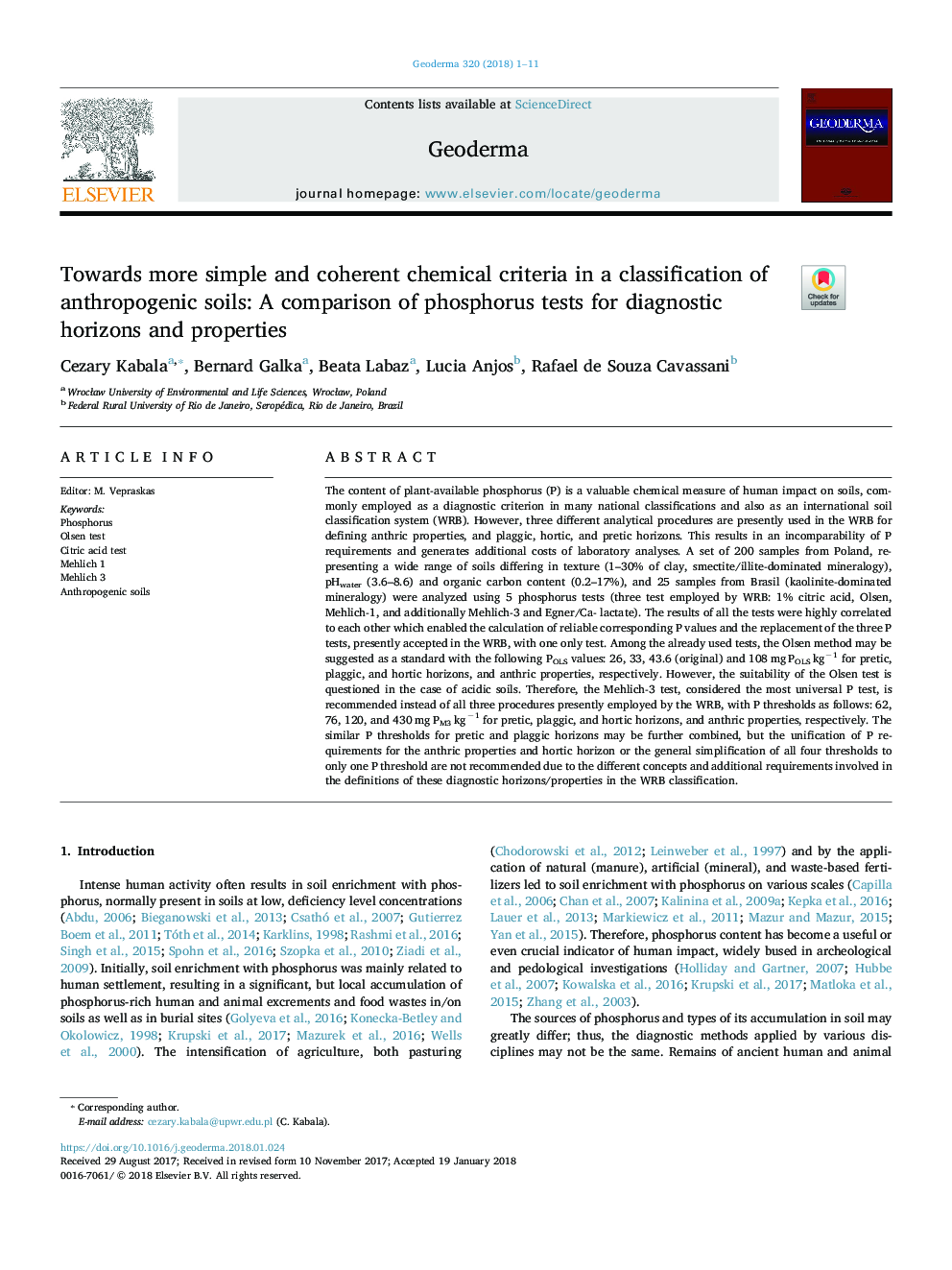| کد مقاله | کد نشریه | سال انتشار | مقاله انگلیسی | نسخه تمام متن |
|---|---|---|---|---|
| 8894112 | 1629397 | 2018 | 11 صفحه PDF | دانلود رایگان |
عنوان انگلیسی مقاله ISI
Towards more simple and coherent chemical criteria in a classification of anthropogenic soils: A comparison of phosphorus tests for diagnostic horizons and properties
ترجمه فارسی عنوان
به سوی معیارهای ساده تر و یکپارچگی شیمیایی در طبقه بندی خاک های انسانی: مقایسه تست های فسفر برای افق های تشخیصی و
دانلود مقاله + سفارش ترجمه
دانلود مقاله ISI انگلیسی
رایگان برای ایرانیان
موضوعات مرتبط
مهندسی و علوم پایه
علوم زمین و سیارات
فرآیندهای سطح زمین
چکیده انگلیسی
The content of plant-available phosphorus (P) is a valuable chemical measure of human impact on soils, commonly employed as a diagnostic criterion in many national classifications and also as an international soil classification system (WRB). However, three different analytical procedures are presently used in the WRB for defining anthric properties, and plaggic, hortic, and pretic horizons. This results in an incomparability of P requirements and generates additional costs of laboratory analyses. A set of 200 samples from Poland, representing a wide range of soils differing in texture (1-30% of clay, smectite/illite-dominated mineralogy), pHwater (3.6-8.6) and organic carbon content (0.2-17%), and 25 samples from Brasil (kaolinite-dominated mineralogy) were analyzed using 5 phosphorus tests (three test employed by WRB: 1% citric acid, Olsen, Mehlich-1, and additionally Mehlich-3 and Egner/Ca- lactate). The results of all the tests were highly correlated to each other which enabled the calculation of reliable corresponding P values and the replacement of the three P tests, presently accepted in the WRB, with one only test. Among the already used tests, the Olsen method may be suggested as a standard with the following POLS values: 26, 33, 43.6 (original) and 108â¯mgâ¯POLSâ¯kgâ1 for pretic, plaggic, and hortic horizons, and anthric properties, respectively. However, the suitability of the Olsen test is questioned in the case of acidic soils. Therefore, the Mehlich-3 test, considered the most universal P test, is recommended instead of all three procedures presently employed by the WRB, with P thresholds as follows: 62, 76, 120, and 430â¯mgâ¯PM3â¯kgâ1 for pretic, plaggic, and hortic horizons, and anthric properties, respectively. The similar P thresholds for pretic and plaggic horizons may be further combined, but the unification of P requirements for the anthric properties and hortic horizon or the general simplification of all four thresholds to only one P threshold are not recommended due to the different concepts and additional requirements involved in the definitions of these diagnostic horizons/properties in the WRB classification.
ناشر
Database: Elsevier - ScienceDirect (ساینس دایرکت)
Journal: Geoderma - Volume 320, 15 June 2018, Pages 1-11
Journal: Geoderma - Volume 320, 15 June 2018, Pages 1-11
نویسندگان
Cezary Kabala, Bernard Galka, Beata Labaz, Lucia Anjos, Rafael de Souza Cavassani,
